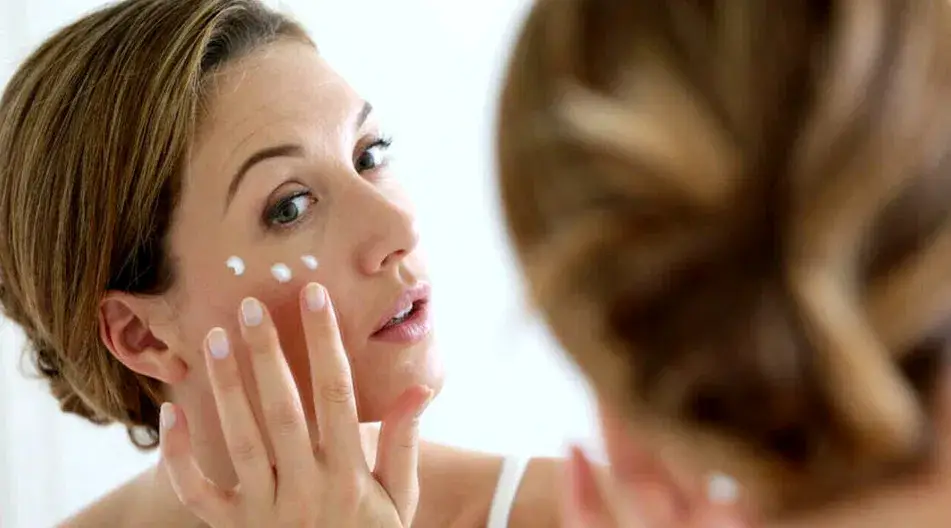Chin Acne: Understanding Causes, Prevention, and Professional Treatment Options
Introduction: The Complexities of Lower Face Breakouts
Chin acne represents one of the most common yet challenging dermatological concerns affecting individuals across diverse age groups and skin types. Unlike acne occurring in other facial regions, chin breakouts often present unique characteristics and underlying causes that require specialized understanding and targeted treatment approaches. This comprehensive analysis examines the multifaceted factors contributing to chin acne development while providing evidence-based strategies for prevention and management.
The chin and jawline area, collectively known as the perioral region, exhibits distinct physiological characteristics that make it particularly susceptible to acne formation. The concentration of sebaceous glands in this area, combined with hormonal sensitivity and frequent exposure to external irritants, creates an environment where breakouts can develop and persist despite conventional skincare efforts.
Understanding the specific mechanisms underlying chin acne development enables healthcare professionals and patients to implement more effective treatment strategies while addressing root causes rather than merely managing surface symptoms. This targeted approach often yields superior long-term outcomes compared to generalized acne treatments.
Hormonal Influences: The Primary Driver of Chin Acne
Hormonal fluctuations represent the most significant contributing factor to chin and jawline acne, particularly among adult populations. The androgen hormones, including testosterone and dihydrotestosterone (DHT), exert powerful effects on sebaceous gland activity and keratinocyte proliferation within hair follicles, leading to the characteristic inflammatory lesions observed in hormonal acne patterns.
Menstrual Cycle Variations
The monthly hormonal cycle creates predictable patterns of acne flare-ups, typically occurring during the luteal phase when progesterone levels peak and estrogen concentrations decline. This hormonal shift stimulates increased sebum production while promoting inflammatory responses within follicular structures, resulting in the deep, painful cystic lesions characteristic of premenstrual acne.
Research indicates that approximately 65% of women experience premenstrual acne exacerbations, with the chin and jawline representing the most commonly affected areas. These breakouts typically appear 7-10 days before menstruation and may persist throughout the menstrual period before spontaneously resolving as hormonal levels stabilize.
Pregnancy-Related Acne Changes
Pregnancy introduces complex hormonal modifications that can either improve or worsen existing acne conditions. The dramatic increase in progesterone during the first trimester often triggers significant acne flare-ups, particularly in the chin region. However, the subsequent rise in estrogen levels during the second and third trimesters frequently leads to improvement in acne severity.
Pregnant individuals experiencing chin acne require specialized treatment approaches that prioritize fetal safety while maintaining therapeutic efficacy. Many conventional acne medications, including retinoids and certain antibiotics, are contraindicated during pregnancy, necessitating alternative treatment strategies.
Polycystic Ovary Syndrome (PCOS) Considerations
PCOS affects approximately 10-15% of reproductive-age women and represents a significant cause of persistent chin acne. The elevated androgen levels characteristic of PCOS stimulate excessive sebum production while promoting abnormal keratinization within hair follicles, creating ideal conditions for acne development.
PCOS-related chin acne typically presents as deep, inflammatory lesions that resist conventional topical treatments. Management often requires systemic approaches, including hormonal contraceptives, anti-androgen medications, or insulin-sensitizing agents that address the underlying metabolic dysfunction.
Dietary Factors and Metabolic Influences
Emerging research continues to illuminate the complex relationship between dietary patterns and acne development, with particular relevance to chin breakouts. The consumption of high-glycemic foods, dairy products, and processed items may trigger inflammatory cascades that exacerbate existing acne conditions.
Glycemic Index and Insulin Response
Foods with elevated glycemic indexes cause rapid blood sugar spikes, triggering compensatory insulin release. This insulin surge stimulates insulin-like growth factor-1 (IGF-1) production, which enhances androgen activity and promotes sebaceous gland hyperactivity. The result is increased oil production and enhanced inflammatory responses within affected follicles.
Clinical studies demonstrate that individuals following low-glycemic dietary patterns experience significant reductions in acne severity compared to those consuming high-glycemic foods. These improvements are particularly pronounced in the chin and jawline regions, suggesting that hormonal acne patterns are especially responsive to dietary modifications.
Dairy Product Associations
Multiple epidemiological studies have identified associations between dairy consumption and acne severity, particularly among adolescent and young adult populations. The hormones naturally present in dairy products, including IGF-1 and various androgens, may contribute to acne development through mechanisms similar to endogenous hormonal influences.
The relationship between dairy consumption and chin acne appears most pronounced with skim milk consumption, possibly due to higher concentrations of bioactive compounds in reduced-fat dairy products. However, individual responses vary significantly, and elimination diets may help identify personal triggers.
Skincare Practices and Product Selection
Inappropriate skincare practices represent a major modifiable risk factor for chin acne development. The selection of comedogenic products, inadequate cleansing techniques, or excessive manipulation can significantly worsen existing conditions while preventing effective treatment outcomes.
Product Formulation Considerations
The chin area’s sensitivity to comedogenic ingredients requires careful product selection, particularly for individuals prone to hormonal acne. Heavy moisturizers, oil-based cleansers, and products containing pore-clogging ingredients like coconut oil or isopropyl myristate can exacerbate existing breakouts while promoting new lesion formation.
Non-comedogenic product formulations utilize ingredients that do not obstruct follicular openings while providing necessary hydration and protection. These products typically undergo specialized testing to ensure compatibility with acne-prone skin while maintaining therapeutic benefits.
Cleansing Technique Optimization
Proper cleansing techniques play crucial roles in chin acne prevention and management. Over-cleansing or aggressive scrubbing can disrupt the skin barrier, leading to increased oil production and inflammatory responses. Conversely, inadequate cleansing allows accumulation of makeup, sunscreen, and environmental pollutants that can obstruct follicles.
Optimal cleansing involves gentle, twice-daily application of appropriate cleansing products using lukewarm water and soft washcloths or clean hands. Mechanical exfoliation should be limited to once or twice weekly using gentle products specifically formulated for sensitive, acne-prone skin.
Environmental and Lifestyle Factors
Modern lifestyle patterns introduce numerous environmental factors that can contribute to chin acne development. These external influences often interact with internal factors to create perfect storms for breakout formation.
Digital Device Contamination
Smartphones and other frequently handled devices harbor significant bacterial populations that can transfer to facial skin during normal use. The chin and jawline areas experience particular exposure during phone conversations, creating opportunities for bacterial colonization and subsequent inflammatory responses.
Regular sanitization of electronic devices using appropriate disinfectants can significantly reduce bacterial transfer while minimizing acne risk. Additionally, using hands-free communication methods reduces direct contact between contaminated surfaces and facial skin.
Stress-Related Hormonal Changes
Chronic stress triggers cortisol release, which can stimulate androgen production and enhance inflammatory responses throughout the body. This stress-hormone cascade often manifests as increased acne activity, particularly in hormonally sensitive areas like the chin and jawline.
Stress management techniques, including regular exercise, meditation, adequate sleep, and psychological counseling, can help regulate cortisol levels while reducing acne severity. These lifestyle modifications often provide synergistic benefits when combined with appropriate topical treatments.
Medical Conditions and Systemic Factors
Persistent or severe chin acne may indicate underlying medical conditions requiring specialized evaluation and treatment. These systemic factors often necessitate comprehensive diagnostic workups and coordinated care between dermatologists and other medical specialists.
Endocrine Disorders
Various endocrine conditions can manifest with acne-like symptoms, particularly in the chin region. Adrenal disorders, thyroid dysfunction, and insulin resistance can all influence hormone levels in ways that promote acne development. Proper diagnosis and treatment of these underlying conditions often leads to significant improvement in acne severity.
Medication-Induced Acne
Certain medications, including corticosteroids, lithium, and some anticonvulsants, can trigger or worsen acne conditions. These drug-induced reactions often affect the chin area and may require medication adjustments or additional therapeutic interventions to manage effectively.
Professional Treatment Approaches
Effective chin acne management often requires professional dermatological intervention, particularly for persistent or severe cases. Treatment strategies should address both immediate symptom relief and long-term prevention while considering individual patient factors and preferences.
Topical Therapies
Professional-strength topical treatments, including retinoids, benzoyl peroxide, and prescription antibiotics, can provide significant improvement in chin acne when properly selected and applied. These medications work through various mechanisms to reduce inflammation, normalize follicular keratinization, and eliminate pathogenic bacteria.
Systemic Interventions
Severe or treatment-resistant chin acne may require systemic medications, including oral antibiotics, hormonal contraceptives, or isotretinoin. These treatments address acne from internal perspectives while providing more comprehensive control over inflammatory processes.
Advanced Procedures
Professional procedures, including chemical peels, extraction techniques, and laser therapies, can complement traditional treatments while providing enhanced outcomes for difficult cases. These interventions require specialized expertise and careful patient selection to ensure optimal results.
Prevention Strategies and Long-Term Management
Successful chin acne prevention requires comprehensive approaches that address multiple contributing factors simultaneously. Long-term management strategies should emphasize sustainable lifestyle modifications rather than relying solely on reactive treatment approaches.
Consistent skincare routines using appropriate products, stress management techniques, dietary awareness, and regular professional monitoring can significantly reduce chin acne frequency and severity while improving overall skin health and appearance.
Conclusion: Integrated Approach to Chin Acne Management
Chin acne represents a complex dermatological condition requiring individualized treatment approaches that address multiple contributing factors. Understanding the interplay between hormonal influences, lifestyle factors, and skincare practices enables more effective prevention and management strategies.
Professional dermatological consultation remains essential for persistent or severe cases, as underlying medical conditions may require specialized diagnosis and treatment. However, many individuals can achieve significant improvement through appropriate skincare practices, lifestyle modifications, and targeted therapeutic interventions.
The key to successful chin acne management lies in patience, consistency, and willingness to address root causes rather than merely treating surface symptoms. With proper understanding and appropriate interventions, most individuals can achieve substantial improvement in their chin acne while maintaining healthy, clear skin long-term.

Sophia Rivers is an experienced News Content Editor with a sharp eye for detail and a passion for delivering accurate and engaging news stories. At TheArchivists, she specializes in curating, editing, and presenting news content that informs and resonates with a global audience.
Sophia holds a degree in Journalism from the University of Toronto, where she developed her skills in news reporting, media ethics, and digital journalism. Her expertise lies in identifying key stories, crafting compelling narratives, and ensuring journalistic integrity in every piece she edits.
Known for her precision and dedication to the truth, Sophia thrives in the fast-paced world of news editing. At TheArchivists, she focuses on producing high-quality news content that keeps readers informed while maintaining a balanced and insightful perspective.
With a commitment to delivering impactful journalism, Sophia is passionate about bringing clarity to complex issues and amplifying voices that matter. Her work reflects her belief in the power of news to shape conversations and inspire change.
